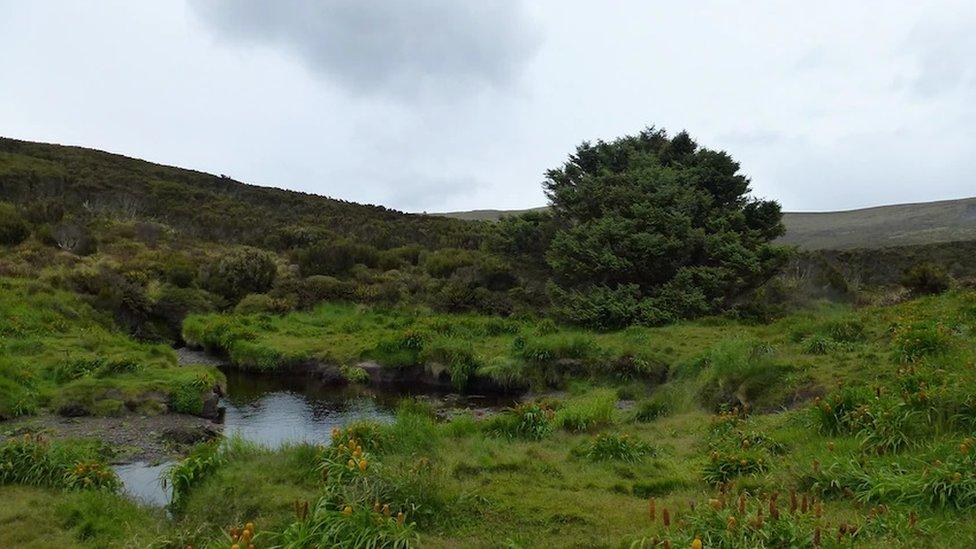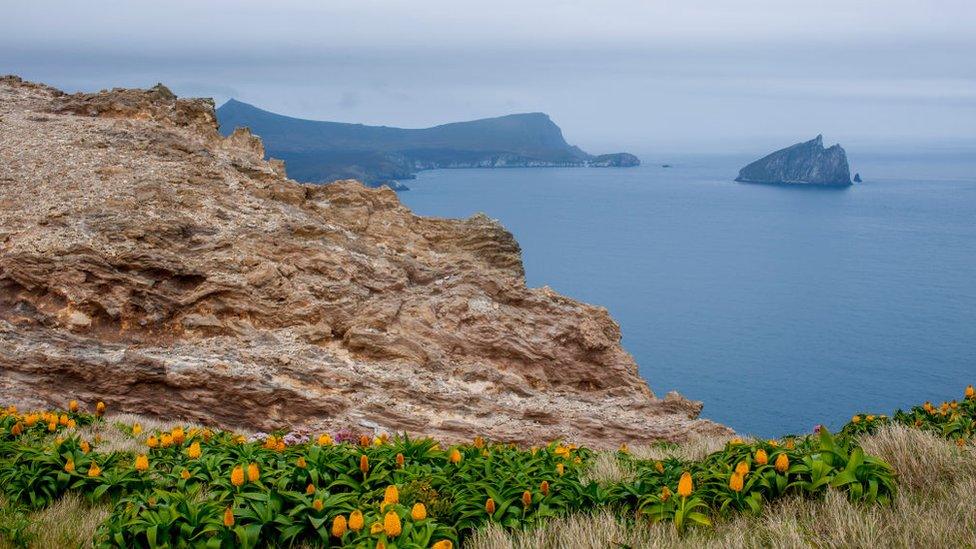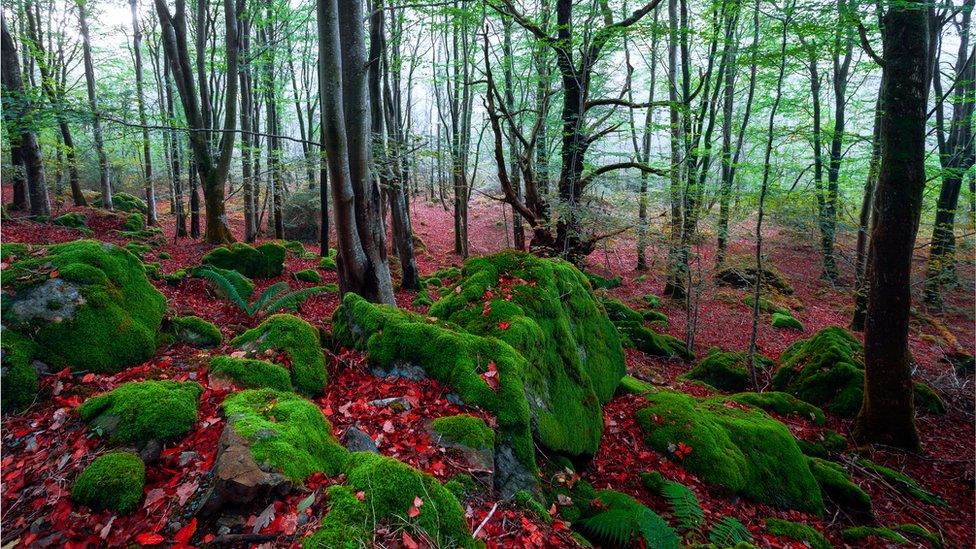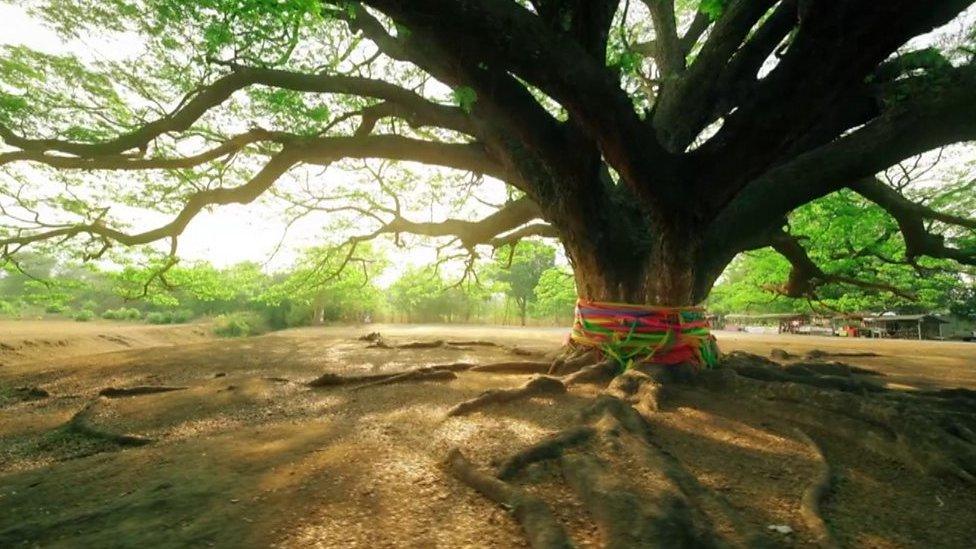'World's loneliest tree' could answer climate change questions
- Published
- comments

Scientists hope that the world's loneliest tree can help answer climate change questions.
The tree, on a remote island more than 400 miles south of New Zealand, doesn't have any leafy neighbours nearby and its closest companion is over 150 miles away.
The 100-year-old spruce is described by Guinness World Records as the "most remote tree in the world".
The fact the tree has managed to grow at all raises a lot of questions, but one answer it could soon provide is how the climate works in that part of the world.
Read on to find out more and try our tree quiz at the end!

Campbell Island is in the Southern Ocean
Nicknamed the Ranfurly tree after Lord Ranfurly (the then governor of New Zealand) - the man who planted it on Campbell Island in the early 1900s - the tree has grown in an area of the world that is described as a carbon sink.
Carbon sinks are important in the fight against climate change because they are areas that absorb more carbon from the atmosphere than they release - some examples of things that do this include plants, the ocean and soil.
According Guinness World records which quotes the New Zealand Journal of Ecology, the Randurly tree is a Sitka spruce - Picea sitchensis - which is originates from the west coast of North America and is named after Sitka, in Alaska
"Of the CO2 that we produce from burning fossil fuels and put into the atmosphere, only about half stays there and the other half goes into the land and the ocean," says Dr Jocelyn Turnbull from GNS science in New Zealand.
"It turns out the Southern Ocean - one of those carbon sinks - has taken up about 10% of ALL of the emissions that we have produced over the last 150 years."
Scientists are now trying to figure out two things: if carbon sinks "fill up", will that cause a big increase in global warming and climate change? Or, by learning how they work, are there ways to help carbon sinks to take even more carbon dioxide out of the atmosphere and reduce global warming?
[The tree] doesn't look lonely … it looks quite content actually.
So how can the lonely tree help?
Big Question: Why do trees live for so long?
"You can't collect air that was there 30 years ago, because it is not there any more," says Dr Turnbull.
"So we came up with this idea of using tree rings. Plants, when they grow take carbon dioxide out of the air by photosynthesis and they use that to grow and the carbon from the air ends up in the tree rings."
Tree rings are the markings you can see on a tree trunk or parts of a tree like large branches if they are cut down.
So that's where the loneliest tree comes in, because trees in the area are so rare.
If you cannot see the quiz, click here.
"It's grown a lot faster that anything else [in that region] and the rings are bigger and easier to separate out and get a record from," says Dr Turnbull who using a hand drill, took a small sample from the tree in 2016.
Researchers are still analysing the sample, but haven't yet published their findings.
And if you're feeling a bit sorry for the world's loneliest tree, Dr Turnbull didn't throw any shade, by offering some words of comfort.
Describing her walk to the tree she said: "You have to walk through elephant seals and sea lions, penguins and albatross," she explains. "[The tree] doesn't look lonely … it looks quite content actually."
- Published6 December 2021

- Published11 November 2021

- Published11 August 2022

